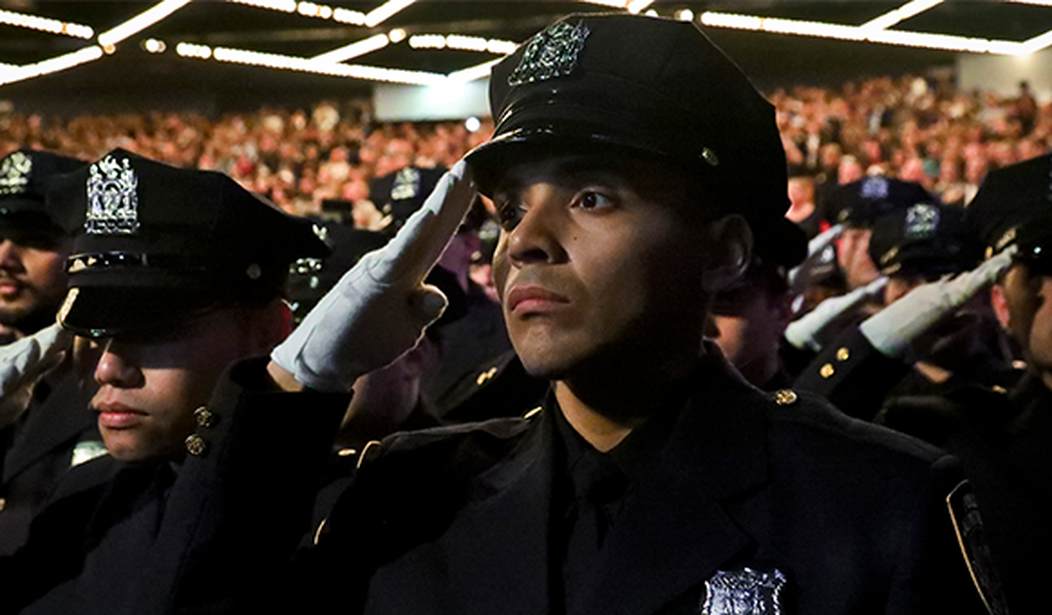Recent events and calls to ‘Defund the Police’ are generating big changes at some large urban police departments. These additional changes are following reforms such as the elimination of cash bail, which has already proved problematic for New York City.
New York City Police Department
Even in announcing the latest changes, NYPD Police Commissioner Dermot Shea had to note that crime and homicides were trending up city-wide. Yet, following what he referred to as “protests and demonstrations” rather than riots, arson, and looting, he announced a stunning shift in the department.
The NYPD just disbanded every Precinct Anti-Crime teams. These teams historically account for the majority of gun arrests in NYC https://t.co/HhFHf8HAWm
— Rob O'Donnell (@odonnell_r) June 15, 2020
The Precinct Anti-Crime units are plainclothes officers who, even according to Shea, are charged with apprehending armed and dangerous criminals. It stands to reason they are involved in more officer-involved shootings, which seems to be the motivation for disbanding them. Shea admitted during press questioning the decision is not without risk and it’s likely fewer guns will be taken out of the hands of criminals. Great news for a city that is already seeing an increase in crime.
The unit, made up of roughly 600 officers, will be reallocated to other units such as detectives and neighborhood policing. Shea says culturally this move closes the chapter on stop and frisk and will relieve the stress on communities that have to “endure being stopped.” Maybe he needs to worry about communities that are already enduring more violent crime.
On the upside, Shea did defend the work of the anti-crime units. He said they operated and conducted their work as ordered up to this point. However, despite their effectiveness, the units will be eliminated. Shea referenced 21st-Century Policing, an Obama era directive.
His contention is that surveillance, DNA collection, community involvement, and trust will help solve crimes. It hasn’t worked yet, so where he gets this confidence is unclear, to say the least. He strenuously opposed reducing funds or officers in the department. No small wonder.
Atlanta Police Department
The same day this change was announced, Atlanta Mayor Keisha Lance Bottoms introduced new administrative orders in the wake of the police-involved shooting of Rayshard Brooks. She also echoed coming into line with the Obama era guidelines.
Her first order is that senior officials work together to adopt and implement reforms to the Atlanta Police Department’s standard operating procedures regarding the use of force. However, in her directive, she ignores the 1989 Supreme Court precedent provided in Graham v. Connor. Bottoms said:
“Officers should use only the amount of objectively reasonable force necessary to successfully protect themselves or others to affect an arrest or bring an incident under control when dealing with members of the community, suspects, detainees, et cetera.”
The court particularly noted in the majority opinion that “police officers are often forced to make split-second judgments in circumstances that are tense, uncertain and rapidly evolving about the amount of force that is necessary is in a particular situation.” The ruling went on to specify with the granularity that “The ‘reasonableness’ of a particular use of force must be judged from the perspective of a reasonable officer on the scene, rather than with the 20/20 vision of hindsight.”
It is also interesting to note that while Bottoms reported being angry and shocked over the Brown shooting, she could not independently point to a single violation by the officer. Wishing it hadn’t happened is one thing. Applying a politicized view of the incident in hindsight is quite another. The full video shows the undeniable evolution of a scene from cordial to deadly.
A legally drunk Brown had turned violent, the officer’s partner had his head smashed into the concrete, the suspect had a weapon and was fleeing when he turned to point the taser at the officer still standing. The officer had a split-second decision to make with members of the public in the area. Any charging decision will certainly be debated and fiercely litigated.
The other orders she provided were that all deadly uses of force must be reported to the community review board and officers have an explicit duty to intervene and report other officers engaged in excessive use of force. Unlike Shea, she did not support the officers of the Atlanta Police Department as a whole.
These changes follow other criminal justice reforms her administration has already made:
- Elimination of cash bail for non-violent offenders
- Diversion of funds from corrections to community programs
- Elimination of detention related to ICE detainers
Based on this, she called for the city jail to be transformed into a center of “equity, health, and justice.” Not sure if this means Atlanta has run out of violent criminals and it will be turned into a community center or what. She did not specify.
Escape From New York City
The sad part is, both of these metros have known high crime rates and urban flight. In the late ’70s and all through the ’80s both cities were listed as having some of the highest murder rates in the country.
Having been to New York City as a teen when my dad worked for the Metropolitan Transit Authority, the late ’80s were particularly bad. I remember Times Square smelled like a dirty bathroom and I was taught to hold my purse, carrying not much more than lip gloss, to my chest to avoid pickpockets. The Bronx looked like a war zone in broad daylight when we visited the zoo. Even in my father’s Brooklyn Heights neighborhood, my older cousin and I were chastised for going a block up to Häagen-Dazs after dusk, something that we would not have hesitated to do at our homes in upstate New York.
Returning in 2003 as a tour guide of sorts for people attending training in my company’s New Jersey headquarters, I could not believe the difference. Times Square was brightly lit and full of retail outlets and restaurants. Walking around after dark felt safe and we walked all over for dinner at historic restaurants like Sardi’s. The city was cleaner, brighter, and buzzing with energy.
How little time it has taken the nation’s worst mayor, Bill de Blasio, to undo all of that in the name of progress. Net out-migration, especially of wealthy New Yorkers, was already high. It will only go up.
Atlanta Not far Behind
Likewise, Atlanta seemed like a clean and fun city the few times I ventured downtown to places like The Vortex and meetings in Buckhead. My trips inside 285 are likely to go down to zero now. The plain truth is that the suburbs and the exurbs have great restaurants, good venues, plenty to do, and the tiny towns up north have a lot to offer.
It seems Atlanta may be about to see the effects of net out-migration as well. In the last two weeks, housing prices in my county have ticked upward, despite the economic shutdown. Two real estate agents I spoke with say they are seeing increasing showings from people inside the loop.
This trend will probably not be found in just these two metros. As blue cities struggle to appease the mob, many will see the same fate. It’s almost like we’ve seen this movie before.










Join the conversation as a VIP Member